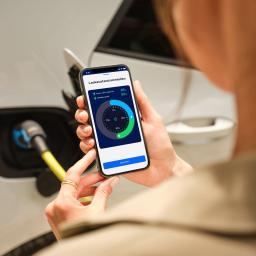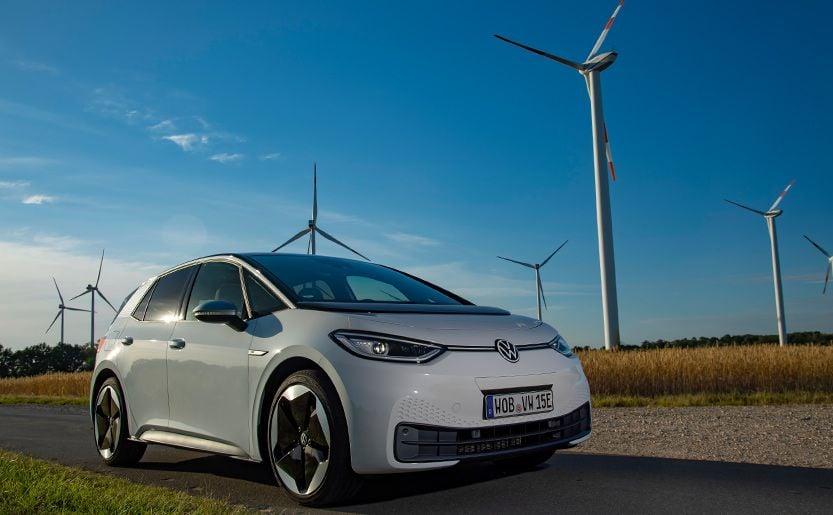The mobility transition is in full swing
The trend is clear: Electric vehicles will form the backbone of the transportation revolution in the future, even though their growth was slightly lower than forecasted - due to geopolitical tensions and resulting supply bottlenecks across the entire car market. However, electric vehicles stand as a cornerstone: Registrations increased by an impressive 28.2 percent compared to the previous year, representing 18 percent of the total registration volume. By October 1, 2023, 2.7 percent of all cars were purely electric – that is 1.31 million battery-powered vehicles in total.
Energy power for the grid from millions of electric vehicles
The combined battery capacity in over a million electric cars contributes over 80 GWh to the power grid. Even if only a fraction of their capacity is utilized, it's a significant factor. To put it in perspective: all German pumped-storage power plants currently produce just about 40 GWh. With the increase in electric vehicles, this potential will continue to grow. This trend signifies not only a substantial impact on the power grid but also the imminent era of bidirectional charging. According to the study "Bidirectional Charging in Germany – Market Development and Potentials," conducted by the reputable consultancy P3 automotive GmbH on behalf of e-mobil BW GmbH and NRW.Energy4Climate GmbH, by 2030, 5.2 million vehicles and by 2035, approximately 21.7 million vehicles will be capable of bidirectional charging—equivalent to 65% of the total electric vehicle stock in 2035.
Emergency rescue: blackout prevented by EV batteries
Vehicle-to-Grid (V2G) plays a significant role in grid stability. By harnessing the mobile energy storage of electric cars as a giant power plant, it's possible to absorb power shortages, stabilize the grid, and prevent potential blackouts. The reality of this scenario was evident on June 25, 2023: a power plant failure and a fault in a coupling line to Norway caused a deficit in the German power grid. However, our algorithms reacted within seconds to this fluctuation. Approximately 4,500 vehicle batteries stepped in to provide enough energy equivalent to the needs of about 20,000 households - with the potential for up to 74,000 more if the situation had escalated further. By activating these bidirectional energy storage units, not only the need to activate additional gas and coal power plants was avoided, but it also proved that the green energy transition can be realized in everyday life.
Showcase: 148 batteries rock Coldplay concert
Another great example of the incredible power of such a battery network was demonstrated together with the Amsterdam Johan Cruijff ArenA. There, 148 stationary 1st and 2nd-life electric car batteries provided electricity for the concert by the successful band Coldplay. During the day, these energy stores were charged with solar power and discharged during the performance. Future expansions even promise a 100% power supply.
The concept of using vehicle batteries as an energy source for the stadium can potentially also be implemented with mobile vehicle batteries: visitors park their EVs, agree to bidirectional charging and supply power to the stadium. The pilot project confirms: scaling is feasible.
From parking lots to power reserves: EVs as silent heroes of the energy system
Parked electric vehicles are becoming flexible storage units. According to the Federal Environment Agency, on average, a private car is parked for 23 hours a day, and the average German driver covers only 36 kilometers per day - far less than the batteries' potential, which typically offer a range of around 350 kilometers.
The revenues generated in the energy market confirmed these numbers during a field test at the EUREF Campus from February to July 2022, conducted in partnership with AUDI AG. 18 batteries from Audi e-tron models were used as mobile storage units and part of a smart grid. The result: extrapolated over a year, one battery had revenue potential of €1,556. The risk of excessive battery aging, such as heating of energy cells due to frequent deep discharges, was non-existent. Our intelligent algorithms kept the batteries stable in a "comfort zone."
Political response: Heading towards the future of V2G charging in Europe
At Europe's e-mobility summit at the Federal Ministry for Economic Affairs and Climate Protection in November, which was attended by Economic Minister Robert Habeck, high-ranking representatives from seven European member states, and our CEO Marcus Fendt, the focus was on the future of bidirectional charging in Europe. Everyone agreed on the necessity of flexibility for renewable energies and additional energy storage solutions. Improved incentives for vehicle owners were also a central topic. The urgent need for action was recognized. While political statements of intent are crucial, what's needed now are legislative adjustments to concretely harness the flexibility potential of mobile batteries. It's time to take action to prevent the German industry from falling further behind - right now.
eyond: earning money with V2G
We have already demonstrated through numerous projects that bidirectional charging already works today and brings also benefits for customers and the energy system. Our intelligent charging tariff, eyond, aims to achieve this: eyond allows electric vehicle owners to provide their storage during times of high demand. Our technology charges the electric car when green energy is affordable and available in large quantities. This flexibility not only stabilizes the grid but also saves EV drivers real money - up to €250 per year. With eyond and control according to §14a, the potential savings can exceed €400 annually. Users simply need to plug in their car and specify the desired charging flexibility, indicating when the car needs to be fully charged and ready for use again.

With our smart charging tariff and §14a EnWG, save over 400 euros on charging costs.
Energy revolution in January: §14a EnWG
The new regulation of the Energy Industry Act marks a milestone: §14a allows grid operators, starting from January 1, 2024, to temporarily reduce the power of heat pumps, refrigeration systems, electric car charging stations, and other so-called 'fully interruptible consumption devices’ to ensure grid stability. This permits a temporary reduction in charging power to 4.2 kW during peak loads. Self-generated energy from personal solar installations can be taken into account. Why all this? This measure and the associated flexibility are crucial to integrate weather-dependent renewable energies into the power grid more efficiently. In return, electric vehicle owners benefit from reduced grid fees under §14a, saving an average of €160 annually. Additionally, newly installed charging stations with over 4.2 kW charging capacity must be controllable. This approach initiates a long-overdue shift towards intelligent grids and meters.
Bidirectional charging picks up speed
The market roll-out of alternative engines has reached full speed. Achieving adequate coverage with charging infrastructure requires close coordination with automobile manufacturers. This has been accomplished with confidential cleanroom discussions, where both car and commercial vehicle manufacturers provided details about their product strategies and planned registration figures. The transition to bidirectional charging is speeding up. Initial vehicles supporting this function have already entered the market - such as models from the Volkswagen ID. family. According to VW, previously delivered models will also be retrofitted through updates. Hyundai is also following the V2G-path. In 2025, at least two manufacturers plan to deliver around 25% of their electric vehicles with V2G functionality, with one manufacturer aiming for half and another for 75%.
Explore in our overview which electric vehicles already support V2G.
Bidirectional charging is the key to the energy transition and future mobility – also policymakers agree on this point. Despite the progress made, one thing is certain: clear legislative frameworks on both national and European levels are crucial for the widespread adoption of Vehicle-to-Grid technology, especially regarding grid fees and electricity tax laws. Meanwhile automakers are taking action, delivering the first vehicles with V2G functionality - establishing bidirectional charging as a new, steadfast standard. This marks the beginning of an era where vehicles not only drive and transport but also serve as active energy reservoirs.
